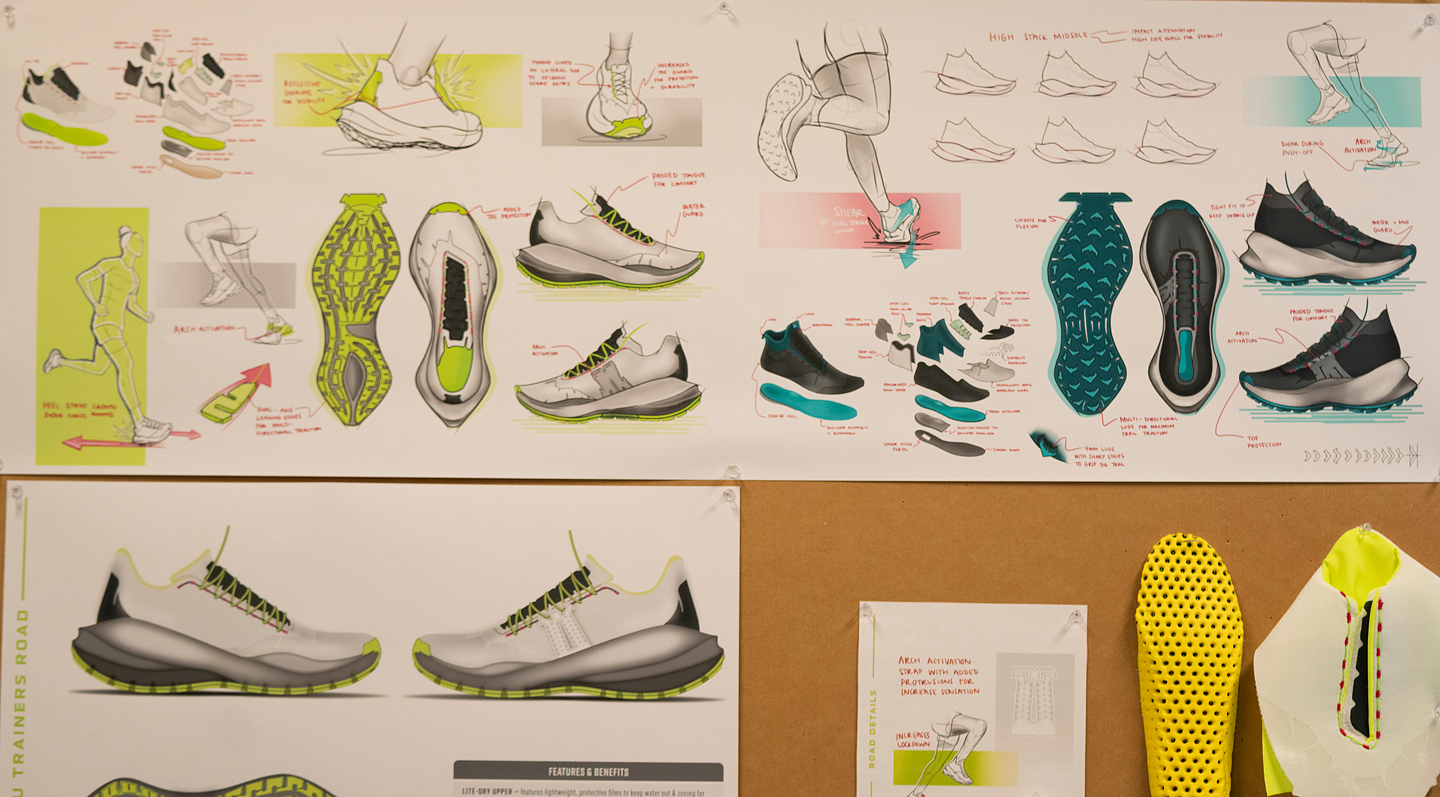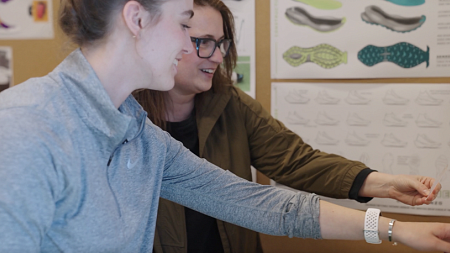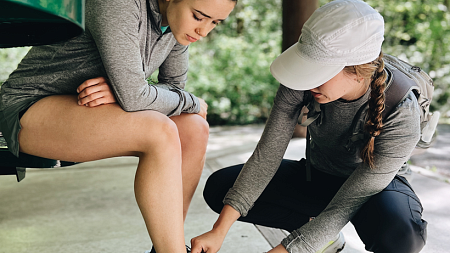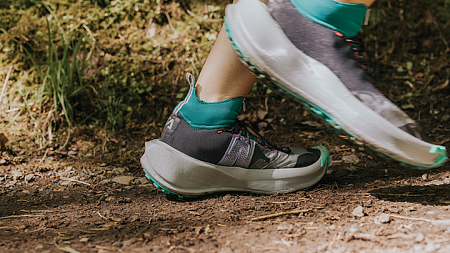

research and collaboration yield innovation in the Wu Tsai Human Performance Alliance at Oregon
The Wu Tsai Human Performance Alliance at Oregon is an interdisciplinary network involving scientists, clinicians, engineers, coaches, athletes, performers and professionals in a wide array of fields from across the global community. Case in point: Sports Product Design master’s student Gabi Lorenzo’s capstone thesis project connects researchers, product designers, sports scientists and women athletes. Under the mentorship of Susan Sokolowski, professor and director of the UO’s Sports Product Design Program, Lorenzo integrated a wearable sensor developed by UO researchers into the midsole of a distance running shoe and tested it among a group of women runners.
The sensor, an optical-based device, which measures forces based on the relative change in light of different wavelengths reflected from a surface of unique color patterns, was the subject of a recent research paper. It leverages new technology developed by Keat Ghee Ong, a professor in the Phil and Penny Knight Campus for Accelerating Scientific Impact.

The idea for the sensor originated with Ong, whose “aha moment” occurred while installing a strip of LED lights in his daughter’s room when he envisioned the sensor’s patented 3-color optical monitoring. Mike Hahn, director of the Bowerman Sports Science Center, and postdoctoral scholar Michael McGeehan identified the potential value of such a sensor in the field of biomechanics. The device, they determined, could be used to measures shear forces — unaligned forces pushing one part of the body in one direction, and another part of the body in the opposite direction — that can lead to injuries and other problems for athletes. Identifying a need for a small, low-power and low-profile sensor, Hahn and McGeehan approached Ghee and wrote a grant proposal together.

Shear sensors can provide measurements that may be a useful feedback mechanism for improving performance among athletes. Shear stress comprises the forces that allow athletes to propel themselves forward, brake or change direction and account for two thirds of the ground reaction forces that occur during running. Without shear stress, athletes could jump, but could not access the forces that are parallel to the ground.
The sensor represents an improvement over many current sensor technologies that are bulkier, heavier, and require a lot of power. Even so, incorporating it into a shoe posed challenges.
“Putting sensors into footwear may seem like an easy thing, but this is actually a difficult challenge because you're putting a hard object into a product that needs to be really flexible and work for an athlete,” Sokolowski said.
“The goal is how can this be imperceptible to the runner, while collecting data that’s accurate and usable for the runner,” Lorenzo added. “It allows us to learn what’s happening to the foot instead of what’s happening to the shoe. That is arguably more important to the runner, what’s happening to their body.
The sensor has other potential uses, including being used to monitor protective sports equipment and prostheses and could also be incorporated into other biomedical and robotics applications, McGeehan said. The research team has developed a working prototype and a smartphone app that can stream the shoe data.
This work was supported by the Wu Tsai Human Performance Alliance and the Joe and Clara Tsai Foundation.


The next step is to put this on athletes and gather real-world data. We can then use these data to develop predictive models to estimate athletes’ performance.
